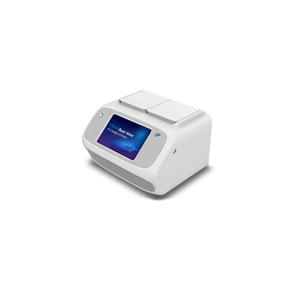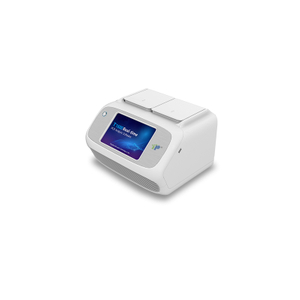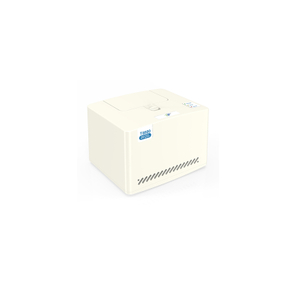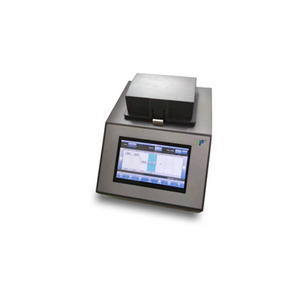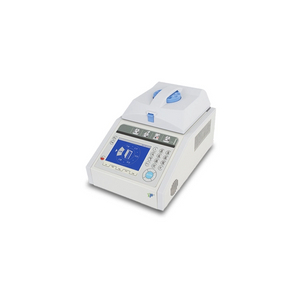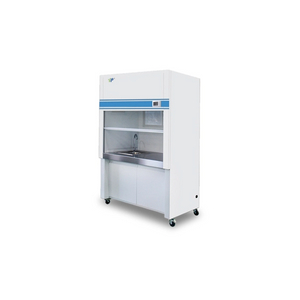Product Category
- Balances And Scales
- Clean Benches
- Lab Fume Hoods
- Biological Safety Cabinets
- Centrifuges
- Refrigerator & Freezers
- Dry Baths
- Water Baths & Circulators
- Hotplates & Stirrers
- Furnaces
- Lab Ovens
- Lab Shakers
- Liquid Handling
- Spectrophotometers
- Microscopes
- Laboratory Incubators
- PCR Instruments
- pH Meters and Electrodes
- Rheometers & Viscometers
- Homogenizers & Tissue Homogenizers
- Sterilizers
- Chemical Analysis Instruments
- Evaporation Equipment
- Laboratory Water Purification
- Petroleum Testing Equipment
- Flash Point Testers
- Petroleum Distillation Testers
- Density and Specific Gravity Meters
- Viscosity Meters (Viscometers)
- Pour Point and Cloud Point Testers
- Color and Appearance Analyzers
- Sulfur Analyzers
- Calorimeters
- Ignition and Combustion Analyzers
- Lubricant Testing Instruments
- Oil Content Analyzers
- Cooling and Temperature Control Units
- Petroleum Sampling Equipment
- Water Quality Testing Equipment
Full Spectrum Direct Reading Inductively Coupled Plasma Emission Spectrometer
- Model: PICP-6810/6810-A1/6810-A2
- Stable performance
- Injection automation
- Accurate analysis
- Quick testing
| Availability: | |
|---|---|
| Quantity: | |








-
PICP-6810 series
-
TOP
The PICP-6810 series is a full spectrum direct reading inductively coupled plasma emission spectrometer used to determine the content of trace and trace elements in different substances (soluble in nitric acid, hydrochloric acid, hydrogen acid, etc.). It is widely used in various fields such as environmental protection, petroleum products, rare earths, semiconductors, geology, metallurgy, chemical engineering, clinical medicine, food, biological samples, criminal science, agricultural research, etc.
Stable performance
Adopting an all solid state RF power supply, it has many advantages such as small size, high efficiency, stable output power, and various protection functions. The load adopts fully automatic matching technology, with fast matching speed, which improves the efficiency of power supply and instrument stability, and makes the entire ignition process simple and convenient.
Injection automation
Adopting a four channel fully automatic design, the speed can be adjusted according to the testing requirements to adjust the flow rate. The carrier gas, plasma gas, and auxiliary gas are all controlled by advanced mass flow controllers. At the same time, imported high salt atomizers, imported hydrogen fluorine resistant atomizers, etc. can be equipped to meet various testing needs of customers.
Accurate analysis
Adopting a medium step grating prism cross dispersion method without moving optical components; Ultra low stray light design combined with unique optical design, nitrogen distributed blowing, imported optical components, intelligent and precise automatic wavelength calibration algorithm.
Quick testing
Using an American thermoelectric CID detector with continuous coverage in the range of 165-900nm, the intensity integration values of all analyzed harmonic lines can be read out in one exposure to accelerate the analysis speed
The PICP-6810 series is a full spectrum direct reading inductively coupled plasma emission spectrometer used to determine the content of trace and trace elements in different substances (soluble in nitric acid, hydrochloric acid, hydrogen acid, etc.). It is widely used in various fields such as environmental protection, petroleum products, rare earths, semiconductors, geology, metallurgy, chemical engineering, clinical medicine, food, biological samples, criminal science, agricultural research, etc.
Stable performance
Adopting an all solid state RF power supply, it has many advantages such as small size, high efficiency, stable output power, and various protection functions. The load adopts fully automatic matching technology, with fast matching speed, which improves the efficiency of power supply and instrument stability, and makes the entire ignition process simple and convenient.
Injection automation
Adopting a four channel fully automatic design, the speed can be adjusted according to the testing requirements to adjust the flow rate. The carrier gas, plasma gas, and auxiliary gas are all controlled by advanced mass flow controllers. At the same time, imported high salt atomizers, imported hydrogen fluorine resistant atomizers, etc. can be equipped to meet various testing needs of customers.
Accurate analysis
Adopting a medium step grating prism cross dispersion method without moving optical components; Ultra low stray light design combined with unique optical design, nitrogen distributed blowing, imported optical components, intelligent and precise automatic wavelength calibration algorithm.
Quick testing
Using an American thermoelectric CID detector with continuous coverage in the range of 165-900nm, the intensity integration values of all analyzed harmonic lines can be read out in one exposure to accelerate the analysis speed
Wavelength range | PICP-6810165nm~900nm PICP-6810-A1 165nm~950nm PICP-6810-A2 165nm~950nm |
Resolution | <0.0068nm@200nm |
Observation method | PICP-6810 Vertical observation PICP-6810-A1 Vertical observation PICP-6810-A2 Bidirectional observation |
Output power | 800~1500W |
Total consumption of argon gas | ≤14L/min |
Detector | PICP-6810CID PICP-6810-A1CCD PICP-6810-A2D |
Liquid content | 0.01ppm~several thousand ppm |
Solid content | 0.001%~70% |
Repeatability | RSD<1% |
Stability | RSD<1.5% (in 2 hours) |
Element detection limit (μ g/L) | Most elements are 1ppb~10ppb |
Wavelength range | PICP-6810165nm~900nm PICP-6810-A1 165nm~950nm PICP-6810-A2 165nm~950nm |
Resolution | <0.0068nm@200nm |
Observation method | PICP-6810 Vertical observation PICP-6810-A1 Vertical observation PICP-6810-A2 Bidirectional observation |
Output power | 800~1500W |
Total consumption of argon gas | ≤14L/min |
Detector | PICP-6810CID PICP-6810-A1CCD PICP-6810-A2D |
Liquid content | 0.01ppm~several thousand ppm |
Solid content | 0.001%~70% |
Repeatability | RSD<1% |
Stability | RSD<1.5% (in 2 hours) |
Element detection limit (μ g/L) | Most elements are 1ppb~10ppb |






